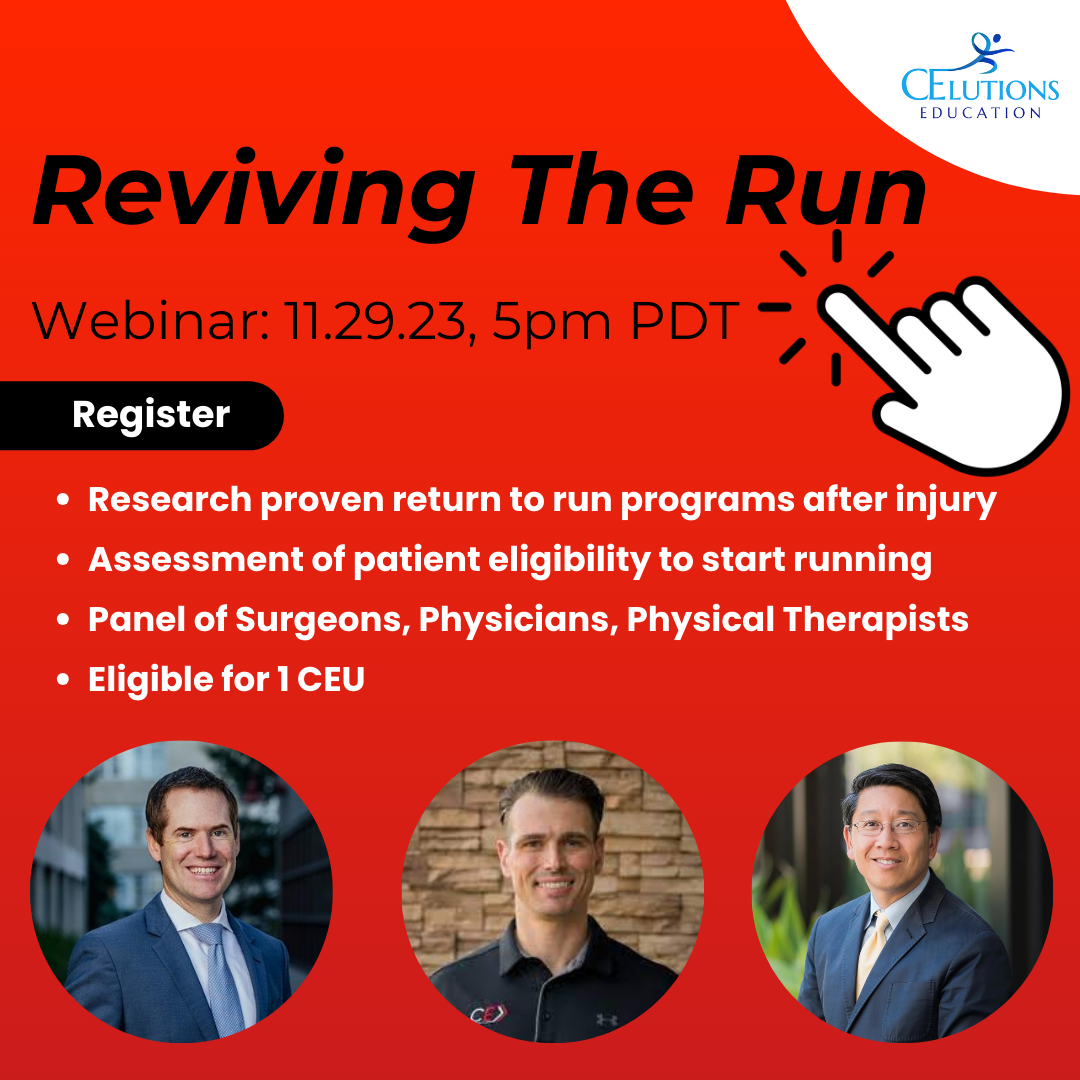Why Gait Retraining Doesn’t Work
Nov 13, 2023
When performing a running gait analysis, gait retraining can be an effective treatment tool. But how often do gait retraining interventions actually make a permanent change in running form? Studies show that while gait retraining is very effective1,2, often interventions fail longterm1. Retraining techniques fail for a number of reasons, most commonly, a lack of consistent feedback for the runner1. Here are several feedback techniques to improve gait retraining success.
Verbal Cues
When implementing gait retraining, verbal cues are one of the most effective tools for running experts. However, finding verbal cues that resonate with the runner are essential. Clinicians should focus cues on easy to remember phrases the runner can use WHILE RUNNING. Here are a couple phrases that are popular among running experts.

Mirrored Running Feedback
Another common biofeedback tool used by running experts is mirrored running. In mirrored running a full length mirror is placed in front of the runner on a treadmill to give them constant feedback on their running form. This technique works especially well with any gait deviations found on an anterior view. Examples include hip drop, hip adduction, knee valgus collapse, excessive pronation, forefoot external rotation and decreased step width. The benefit of mirrored feedback is the consistency of feedback to the runner. The downside is that during mirrored feedback it can be hard for the runner to identify gait deviations. Clinicians should make sure runners can identify improper gait deviations while running before implementing this technique. An example of successful mirrored feedback has been shown to limit hip adduction in patients with patellofemoral pain syndrome.
Did You Miss The Big Webinar Announcement?
Muscle Strengthening Reinforces Gait Retraining
One of the many reasons gait retraining fails is because the runner lacks the strength to avoid faulty gait patterns. As so many clinicians are aware, muscle strengthening can immensely aid gait retraining techniques by providing appropriate strength to maintain proper running form. Verbal cues and mirrored running feedback help runners initially identify correct form. However, to make a lasting change the body must have appropriate muscle strength to avoid defaulting back to faulty gait patterns. Common strengthening exercises focus on single leg squat mechanics with an emphasis preventing hip adduction, genu valgum and arch collapse.
Resources To Help Your Gait Retraining
If you would like to learn more about how to improve your gait retraining success checkout “The Essentials of Running Gait Analysis” continuing education course. With this course you will learn how to confidently perform a running gait analysis and become THE running expert. If you have questions about this content or the course feel free to reach out to us to discuss and we will personally respond to your questions.
Resources:
- Fyock, Marcie, Nelson Cortes, Alex Hulse, and Joel Martin. "Gait Retraining With Real-Time Visual Feedback to Treat Patellofemoral Pain in Adult Recreational Runners: A Critically Appraised Topic". Journal of Sport Rehabilitation 29.5 (2020): 675-679. < https://doi.org/10.1123/jsr.2019-0094>. Web. 10 Nov. 2023.
- Gaudette, Logan W et al. “Clinical Application of Gait Retraining in the Injured Runner.” Journal of clinical medicine vol. 11,21 6497. 1 Nov. 2022, doi:10.3390/jcm11216497
- The Effectiveness of Gait Retraining on Running Kinematics, Kinetics, Performance, Pain, and Injury in Distance Runners: A Systematic Review With Meta-analysis Eoin Doyle, Tim L. A. Doyle, Jason Bonacci, and Joel T. Fuller Journal of Orthopaedic & Sports Physical Therapy 2022 52:4, 192-A5

